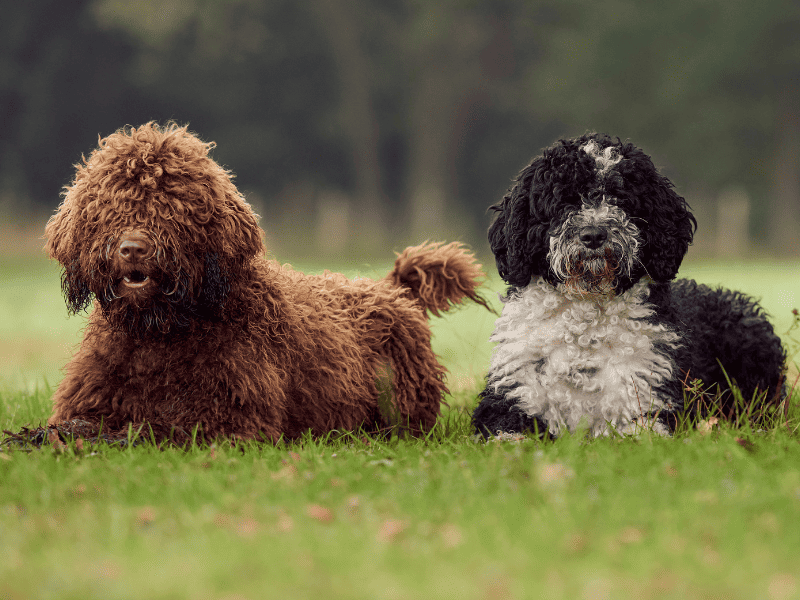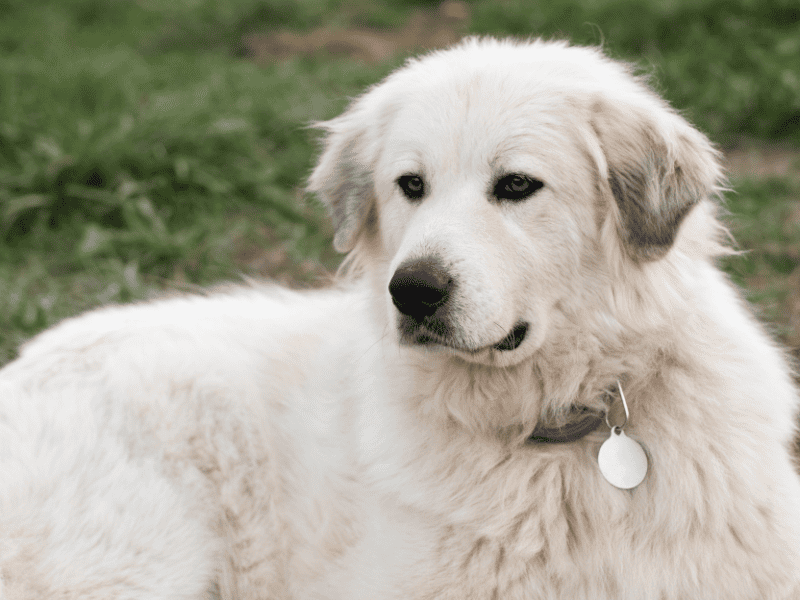Dog tags have a rich history and serve a crucial purpose in military identification. Discover the intriguing origins of these tags and how they have evolved over time. Dive into the importance of dog tags in identifying soldiers and casualties, shedding light on their significant role in military operations.

Get ready to explore the captivating world of dog tags, where a small piece of metal holds immense importance.
Origins and evolution of dog tags in the military
Dog tags have a long past in the military. They began as aluminum identifiers to note soldiers’ name, rank and serial number in WWI. Since then, materials have changed and dimensions have varied. It’s all to meet the needs of the military.
The tags are vital for identifying casualties and personnel in times of conflict. The info on them helps with medical treatment and record keeping. Nowadays, tags have even more detailed info like blood type, allergies, and contacts.
It’s important to select the right size tag for your pet. A chart can help you pick based on breed and size. A good fit makes the tag readable and comfortable for your furry friend.
In conclusion, dog tags have evolved a lot over time. They’ve gone from simple identifiers to stainless steel plates with lots of info. It’s important to choose the right size and to remember the significance of dog tags in honoring those who served.
Importance of dog tags in identifying soldiers and casualties
Dog tags have been an essential part of identifying soldiers and casualties throughout history. These small metal tags contain vital info for quick recognition in emergencies. The origin of these tags can be traced back to the 19th century, when they were used to make sure bodies weren’t lost on battlefields.
Over time, they began to include details such as name, military branch, blood type, and religious affiliation. This info is invaluable for getting soldiers appropriate medical care and notifying families in case of injury or death.
The importance of dog tags to identify soldiers and casualties is immense. In chaotic or high-stress situations, like combat zones or natural disasters, where individuals can be hard to spot, dog tags act as a lifeline.
Having all the necessary info easily accessible allows responders to make crucial decisions on treatment and evacuation. Also, in wartime, dog tags help differentiate friend from foe and keep track of POWs.
The design and materials used for dog tags have evolved over time. Size, shape, and materials like brass or stainless steel have changed with technology advances and innovations to improve durability and legibility. As a result, modern dog tags are more robust and can withstand damage better than their earlier versions.
Customizing dog tags has become popular as personalized accessories or memorabilia. Service members often have customized tags with personal mottos. Veterans may also recreate era-specific tags as a sentimental reminder of their service.
In the world of dog tags, evolution is unleashed!
Evolution of Dog Tags
The evolution of dog tags throughout different time periods reveals fascinating changes in materials, dimensions, and information included on the tags, giving us a glimpse into their historical development and significance.
Development of dog tags during different time periods
Dog tags have changed throughout different time periods. They were used in the military to identify soldiers. The materials, size, and info on the tags evolved over time.
Let’s look at a table that highlights changes:
| Time Period | Key Developments |
|---|---|
| World War I | Metal tags with name and serial number |
| World War II | Blood type info added |
| Vietnam War | Personal symbols and religion preferences |
| Modern Era | High-quality materials and QR codes |
Dog tags changed based on the era and needs. Earlier versions had basic info. Later ones had extra info like blood type and religious symbols. Now, advanced materials make them more durable. Plus, QR codes can give access to more data.
Dog tags have stayed important for identification. They are sentimental mementos for those who served. They are an important part of history.
Changes in materials, dimensions, and information included on tags
Evolution of dog tags has brought changes in materials, dimensions and the information included. Advances have improved durability and readability. Size and shape have been modified for comfort. Information has expanded beyond basic details to include medical info and emergency contact numbers.

Materials and Dimensions: Traditionally, tags were made of alloys like aluminum or steel. Now, lightweight yet durable metals like titanium are used. Dimensions have shifted from rectangular to more rounded or oval forms for comfort. Tags now tend to be smaller and lighter for legibility.
Information: Initially had name, rank and serial number, but now often contain medical info – blood type and allergies – for emergency assistance. Customization options allow people to personalize military ID tags with affiliation and unit insignia. Era-specific tags can be recreated as mementos for historical events or to honor ancestors.
Pick the right size for your furry friend – get an overview of dog tag sizes!
Different Sizes of Dog Tags
When it comes to dog tags, size matters! In this section, we’ll explore the different sizes of dog tags available in the market and why choosing the right size is important for your furry friend. We’ll also provide you with a handy dog tag size chart so you can easily select the perfect fit for your pet.
Get ready to find the ideal dog tag size that combines style and functionality for your beloved companion.
Overview of dog tag sizes available in the market
Dog tags come in small, medium, and large dimensions.
- Small tags are 1.5 inches by 0.9 inches for a subtle look.
- Medium tags have a balance of visibility and practicality at 2 inches by 1.125 inches.
- Larger tags measure 2 inches by 1.25 inches, with more space for info or customization.
Select a size that fits comfortably on your pet’s collar without being too bulky. It’s important to ensure that all needed info can be clearly seen. Consider the significance of having proper identification for your furry friend. Get a tailored tuxedo for your pet – check out the size chart!
Importance of choosing the right size for your pet
The right size for your pet’s dog tag is essential. Choose a size that fits their collar well and allows for easy reading of the engraved info. Here are five reasons why the correct size matters:

- Ensures it fits properly. Too small, and it may fall off. Too big, and it could be a hazard.
- Enhances readability – your pet’s name and contact details should be easy to read.
- Promotes comfort – the right size prevents irritation.
- Easy identification – people can quickly spot your pet.
- Safety – properly sized tags reduce the risk of entanglement and accidents.
Remember to check the size regularly and use a size chart for accuracy.
Dog tag size chart as a reference for selecting the appropriate size
Dog tags come in various sizes, so your pet can feel comfy. The size matters, so you know it won’t get lost or be too tight. To help you find the right one, a size chart is key. It’ll show length and width to compare with your pet’s measurements. It’ll also show the recommended weight for the size. Get informed before buying the tag, so you get the right size!
Some charts might include extra details. Like thickness or compatibility with collars. This helps you pick the best option for your pup. Refer to a size chart to guarantee the tag will fit correctly and meet the manufacturer’s standards.
Did you know dog tags have been around for centuries? They used to follow military specs, but now there are sizes for all animals. Personalize your pup’s tag! Make it unique and stylish.
Overview of Customized Dog Tags
Customized dog tags provide a unique way to personalize and commemorate special moments. From exploring various options for customization to the significance of personalized military dog tags for service members and veterans, as well as recreating era-specific tags for sentimental value, this section offers an overview of the fascinating world of customized dog tags.
Discover how these tags become more than just mere identification, serving as expressions of individuality and lasting mementos of cherished memories.
Various options for customizing dog tags
Customizing dog tags offers pet owners plenty of creative ways to express their pet’s individuality. These include adding decorative colors, patterns, images, and even engraving details like the pet’s name and contact info. Not only does this make the tag more eye-catching, it also serves its primary purpose – identifying and reuniting a lost pet with its owner.
Options for customizing include:
- Colors & Patterns: Choose colors and patterns that match your pet’s collar or express your personal style.
- Engraved Information: Put the pet’s name, owner’s contact info, address, etc. on the tag.
- Design Elements: Add symbols, logos, or icons related to hobbies, interests, or favorite things.
- Medical Alert Tags: Include allergies, medications, or other medical conditions.
- Military Dog Tags: Honor service members and veterans with military insignia or symbols.
Other customization choices include materials, shapes, and sizes. With so many options, you can create a one-of-a-kind tag that reflects the owner and pet’s identity and style. So don’t miss the chance to make a customized tag that looks great and helps keep your pet safe!
Personalized military dog tags for service members and veterans
Customizing military dog tags is an option. Engrave the individual’s name, rank, and branch of service. Include a personalized message or motto that has special meaning. Add important dates like enlistment date or deployment dates.

Some tags can feature symbols or logos representing the military. High-quality materials like stainless steel or aluminum used for durability. Sentimental mementos to recreate era-specific dog tags and preserve historical significance.
It is important to follow ethical practices when using personalized military dog tags. Not to be used for impersonation or unauthorized purposes. Recreate era-specific dog tags to wear history. Personalized tags maintain their significance and honor service.
Recreating era-specific dog tags as sentimental mementos
Dog tags have a long history and are essential for identifying soldiers and casualties. Making replicas of dog tags from different eras is a way to show respect for past service. To capture the spirit of a certain era, research and attention to detail are key.
Materials, dimensions, and information on the tags have changed over time. This shows advances in tech and military practices. To make a replica, one should look up historical records and match details accurately.
A replica is a meaningful keepsake and a connection to the past. Each era had its own style, design, and info. So, replicas can help us understand and appreciate sacrifices made by those who served.
When looking for a replica, choose a reliable source that follows ethical practices. This way, you can be sure the replica is genuine and carries real historical importance.
Final Thoughts on Dog Tag Size
Dog tags hold a profound significance in honoring and remembering those who have served, while ethical practices dictate that they should never be used for impersonation. In this concluding section, we’ll explore the importance of these two aspects, shedding light on the emotional and historical value that dog tags carry, and the ethical responsibility that comes with preserving their true purpose.
Let’s delve into the meaningful conclusion of this discussion on the size and significance of dog tags.
Significance of dog tags in honoring and remembering those who have served
Dog tags have a deep meaning in honoring and remembering those who have served in the military. These identification tags started and developed over time. They are not only useful, but also symbolize the bravery of servicemen and women.
History has seen changes to materials, size and info on these tags. They have been adapted to meet the needs of the military. You can even customize them with unique designs or messages.
Sentimentally, they are special mementos that remind us of the era. Veterans can remember their service and families can remember those who have passed away. Dog tags are reminders of sacrifices and keep the memory alive.
It is important to use them ethically. Impersonation and misuse show disrespect to those who served. With responsible use, we can keep their intended purpose and legacy alive.
Importance of adhering to ethical practices and not using dog tags for impersonation
The significance of ethical behavior and avoiding the use of dog tags for impersonation can’t be stressed enough. Dog tags carry huge importance in recognizing soldiers and casualties, so misusing or imitating them could have severe repercussions. In the military, these tags are a key element for precisely recognizing service members and guaranteeing suitable care for those wounded or dead. They’ve been modified over time in terms of their material, size, and the data inscribed on them. This transformation showcases continuous attempts to upgrade identification processes and increase the efficiency of military operations.
It is also essential to pick the proper size of dog tags for your pet. The market has numerous sizes, so picking the right one ensures comfort and easy wearing for your furry buddy. A dog tag size chart can be a helpful reference when making this decision.
Customized dog tags are obtainable too, with various possibilities for personalizing. From customized military dog tags for service members and veterans to recreating era-specific tags as emotional keepsakes, these customized options bring a bit of individuality while honoring those who have served.
Pro Tip: Always make sure that dog tags are utilized properly and not for any form of impersonation or dishonest activities. Respecting their purpose helps keep their authenticity and worth.
Some Facts About “What is the Size of a Dog Tag? An Overview”:
- Dog tags come in various sizes, including large, regular, and mini.
- The large dog tags are also known as monster dog tags, while the regular dog tags have the same dimensions as the ones used by the military.
- Mini dog tags are the smallest size available.
- Dog tags have evolved in size and shape over time, with the current uniform size being 2 inches long, 1 1/8 inches wide, and 0.025 inches thick.
- The notch in one end of dog tags was due to the type of machine used to stamp them, but in the 1970s, the machines were replaced and the tags became smooth on both sides.



Leave a Reply